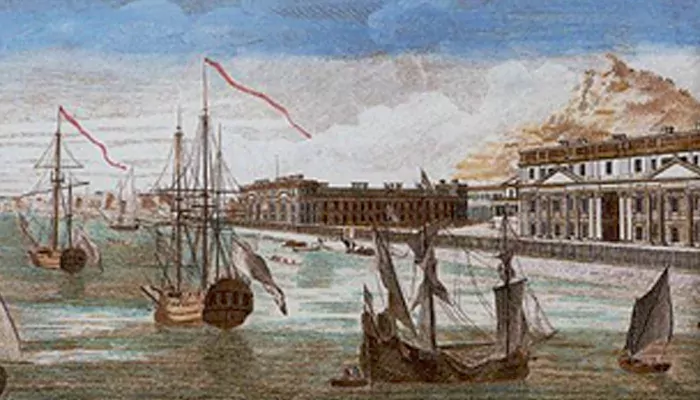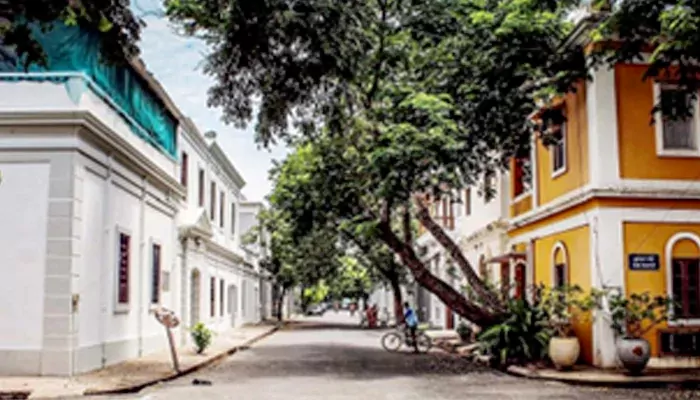
Here’s a journey into the colonial 'what if'...imagining a Francophone India instead of an Anglicized one.
We’ve grown up learning how the British ruled India for 190 long years, and we’ve lived with the impact ever since. But before the British tightened their grip, there were others who came chasing power, including the Portuguese, the Dutch, and among the most ambitious, the French. While all eventually lost the race, the French came dangerously close to building an empire here. And for a while, it was a fierce contest. But in the end, the British won, and the rest, as they say, is history. However, what if things had gone the other way? What if it wasn’t London calling the shots, but Paris? What if our official language had been French, our politics shaped by liberté, égalité, fraternité, and our education system steeped in French ideals?
As we get ready to celebrate India’s 79th Independence Day, let’s imagine what could have been. Let's understand a version of India that never came to be, but almost did. So, what if the French had ruled us instead of the British?
The French East India Company (Compagnie des Indes Orientales) arrived in India in the 1660s. They set up trading posts (Surat in 1668, later Chandernagore and Pondicherry) and gradually added enclaves like Yanam, Mahe, and Karaikal to form a coastal network.
However, their ambitions took flight under Governor Dupleix (in office from 1742 to 1754), who engineered alliances with Indian rulers and raised sepoy regiments under French command. Dupleix aimed to turn French India into more than a collection of trading posts; he sought political dominance - as Alfred Martineau observed, Dupleix wanted French arbiters of Indian affairs.
1950s :: Statue of French Governor Joseph-François Dupleix On a Temple Pillar In Pondicherry
— indianhistorypics (@IndiaHistorypic) January 13, 2024
Dupleix Was Governor of French Ruled Pondicherry From 1742-1754 pic.twitter.com/cBM4QXSVgZ
(Credit: indianhistorypics)
The real turning point came during the Third Carnatic War (1758–1763), coinciding with the global Seven Years’ War. French gains under Dupleix raised alarms, but strategic overreach, financial constraints, and lack of naval support proved fatal. The decisive blow was the Battle of Wandiwash on January 22, 1760. There, French forces led by Comte de Lally were defeated by Sir Eyre Coote’s British army near Vandavasi (then Anglicised as Wandiwash), sealing French decline in the south. Pondicherry fell shortly thereafter in January 1761, and the 1763 Treaty of Paris confined France to a handful of unfortified trading enclaves.
In short, the French came very close, but that decisive defeat at Wandiwash ended any realistic chance of an empire on the subcontinent.
How might India have evolved under French rule? We can look to French colonies from Vietnam and Algeria to West Africa for models.
a) Political and Administrative Structure
French colonial rule was dramatically more centralized than the British system of indirect control via princely states. In French West Africa or Indochina, local rulers were sidelined while colonial governors implemented direct French policies. French colonies operated under the ideology of assimilation - the idea that colonial elites could become culturally French and earn citizenship rights. In India, nawabs might remain as ceremonial figures, but power would rest with governors in Pondicherry or Chandernagore.
The Napoleonic Code, with its emphasis on legal equality (at least in theory), could have been introduced for elites. In Pondicherry, a blend of French and Indian legal traditions already existed prior to full British dominance. This might have fostered a republican temperament in Indian cities, though rural areas would still reflect older feudal structures.
On this day in 1804, the Napoleonic Code went into effect. It remains one of the most influential legal documents of all time. Bonaparte considered it his greatest legacy. "My code is the anchor which will save France, and entitle me to the blessings of posterity." pic.twitter.com/p7TxOAajy1
— The Age of Napoleon (@AgeofNapoleon) March 21, 2022
(Credit: The Age of Napoleon)
b) Language and Education
French would likely have been the administrative language in urban centers; regional tongues like Tamil, Bengali, or Hindi would have persisted in rural life. Elite education would follow French models, imbued with Enlightenment values of reason, secularism, and republican citizenship.
Pondicherry’s Francophone elite already embodied this fusion; historian J.B.P. More describes them as "Indianness permeated by Frenchness". Had France prevailed in southern India, such a Francophone intelligentsia might have spread widely.
c) Culture, Arts, and Architecture
French colonial urban design favored grid‑patterned streets, neoclassical villas, and civic buildings. Pondicherry's “White Town” is a living example of this aesthetic. We can imagine similar boulevards in Madras or Calcutta, with Catholic cathedrals standing alongside temples. Cuisine and art might have blended French romanticism or impressionism with Indian motifs. In Vietnam, French colonial style reshaped urban landscapes, so India could have experienced a similar thing.

Secularism, a French concept, might have tempered communal divisions, though aggressive Catholic missions, as in Vietnam, could have fueled religious tensions.
d) Economy and Trade
Unlike the British, who actively deindustrialized India to serve British textile interests, the French economic model tended to preserve local industries to some extent (though still exploitative). In Indochina, France invested in plantations and infrastructure, often relying on forced labor systems.
In India, local crafts and textiles might have sustained longer under French oversight, though France’s state-dominated trade (often inefficient and riddled with corruption) lacked the commercial dynamism of the British East India Company. French trade priorities would emphasize silk, wi*e, and perfumes, which were aligned with metropolitan needs. Public-works corvée labor (unpaid forced labor) was common in French colonies and might have been imposed upon Indian peasants, too.
e) Social Fabric and Reforms
French colonialism held ambivalent views on social reform. In Algeria and Indochina, traditional elites were disrupted, but racial discrimination persisted. French secular ideology could have challenged caste norms and promoted urban women’s education or limited civic rights for native elites. Yet, real social transformation would lag, especially in deep rural India.
Catholic missions, aggressive in Vietnam, might spark resistance among Hindu or Muslim communities in India. Unlike British rule, which frequently exploited divisions, French secularism could offer a different but contested social vision.
f) Freedom Movement: Would It Look Different?
Nationalist movements in French colonies tended to radicalize (often aligning with communist ideology), and they were met with harsh repression. The Algerian War (1954–1962) and Vietnam’s fight for independence exemplify this trend.
If France had dominated India, the nationalist struggle might have become more violent and revolutionary than the largely non-violent movement led by Gandhi and Nehru. Resistance could mirror Vietnam or Cameroon, with armed uprisings and protracted conflict before independence was won.
On the other hand, France’s withdrawal from its Indian enclaves was peaceful. Pondicherry was handed over in 1954 without partition or bloodshed. India might have gained independence in the 1940s under a different political framework, perhaps aligning with France’s decolonization timeline, but with fewer territorial fractures.
So, what kind of India might we know today?
Language & Law: French could have dominated in courts, government, and elite circles, though regional languages would survive in local life. Indian law might resemble the French civil-law tradition rather than British common law.
Political System: A centralized, unitary state could replace India’s federal structure. Independence might fall under a French-style decolonization model rather than Commonwealth continuity.
Diplomacy: India’s alliances could resemble Vietnam’s relationship with France, meaning strong cultural, educational, and political ties. The Commonwealth may never have formed; perhaps India would join a French Union structure instead.
Culture: There could be a widespread Franco-Indian identity, from cosmopolitan architecture and cafes in Calcutta to literature blending French form and Indian themes. As historian Ben Kiernan notes, French colonialism left an enduring legacy of cultural fusion in its fields of influence.
See, this isn’t nostalgia for a French past; rather, it’s a meditation on how different choices and outcomes could have yielded a very different India.